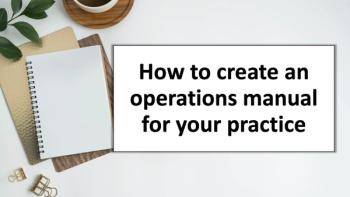
The Know-It-All Patient
All physicians have those patients who cross the line from engaged in their own care to, umm, over-prepared. Here’s how to deal with them effectively.
A well-prepared patient who participates in her care is one thing. But one who has over-researched her symptoms to the point of WebMD-assisted self-diagnosis? Now that’s another thing entirely.
It’s this know-it-all patient who can really be challenging, whether he’s armed to the teeth with misinformation or he’s so convinced of a diagnosis or treatment that he cares little about what you have to say.
“The problem is the over-prepared patient who doesn’t respect the doctor’s expertise or doesn’t trust the physician,” says Lisa Neal Gualtieri, adjunct clinical professor at Tufts University School of Medicine in Boston.
Jesse Hackell, a pediatrician in Pomona, N.Y., sees know-it-all patients from time to time, especially when it comes to sinusitis. Parents always think their child has a sinus infection, he says, but babies and small children don’t have fully developed sinuses that can even get infected.
Try explaining that to parents convinced by what they have read online that their child should be treated for a sinus infection. Or that the child has bronchitis and needs antibiotics.
“If I could have become a doctor by reading the Internet, I wouldn’t have wasted my time in medical school,” Hackell says. “There’s a lot more [to it] than what you read on the Internet or in a textbook.”
It’s a similar case when parents tell Hackell they are in his office because their child has ADHD. “I say, ‘No, you are coming to me because you have a problem, so let’s talk about the problem.’”
Patients don’t fully understand the diagnostic process, or that the doctor needs to know the symptoms not the diagnosis, Gualtieri says. And doctors don’t always know how to fruitfully incorporate the Internet into the consultation, she says.
But the patient who crosses the line from well-informed to over-informed is not only detrimental to the relationship, but can also be costly. These patients may have never-ending lists of questions, and the interactions take far longer than a typical appointment. The time spent answering endless questions in the exam room plus time spent on the phone or via e-mail adds up. “The problem comes into play with physicians who can’t be compensated for this time,” said consultant Susanne Madden, president of The Verden Group in Nyack, N.Y.
So what’s the best way to deal with these know-it-all patients? Here are some pointers:
Take control of the visit. If pediatrician Richard Lander sees his patient has walked in with a stack of printed-out questions, he takes note of the clock and listens to the concerns. “If it takes more than 20 minutes, I say, ‘Listen, what’s the most pressing thing you want to talk about today?’” Lander explains. He’s careful not to suggest that the other questions aren’t important, just that it might require another visit or a call during doctors’ phone hours. And taking control of the visit that way has worked well for him when it comes to over-prepared parents, he says.
If the patient teeters on confrontational, it’s important to recognize the concerns, but stay firm, says Gualtieri. “What I’ve heard from physicians I have spoken to is that the best thing to do is to acknowledge that someone has these ideas about what they need or what is wrong, but to maintain control of the consultation,” she says.
Be prepared. Gualtieri suggests practices include in the pre-exam paperwork a couple questions about what sites patients use for health-related research. Two questions worth asking are: What Web sites do you use to research symptoms or conditions, and do you have any questions that arose from that Internet research? “That would give the patient a message that it’s not something totally separate from the consultation, and it would be giving the information to the physician,” she says. This will also help you stay in control of the visit.
Bill for your time. Looking at the clock not only helps Lander limit the time spent answering questions, it also sets him up to get compensated for his time. “You need to bill for your time,” says Lander, who is the national chair of the American Academy of Pediatrics Section on Administration and Practice Management and serves on AAP’s Private Payers Advisory Advocacy Committee. “You need to know this was a 20-minute visit. Write down the appropriate code so you get paid for the time with the patient. Doctors know they can bill time-sensitive codes, but they don’t always know the time [spent with the patient] and often they don’t get paid for all of it.”
Provide resources. You know your patients are likely to be going online (A recent CDC survey reported 51 percent of adults ages 18 to 64 used the Internet for health information.) or consulting their friends and family. So why not hedge your bets by offering up some respected sites and materials to guide the research? “Of course the idea is not that a physician sends the patient off to cyberspace to figure things out for themselves,” Madden says. “It’s simply that an information-hungry patient is going to be looking for that information anyway, so why not redirect them to reasonable sources.”
Consider putting together a single-sheet handout on a hot issue - vaccines, autism, ADHD -detailing reliable sites and resources. It will help establish trust and show your patients you are forward thinking - and cut down on the time you spend answering questions or correcting misinformation, Madden says.
Prioritize the questions. Madden suggests practices consider setting up a separate e-mail for patients’ general inquiries. These items aren’t urgent, but can be prioritized and handled. For example, a dozen parents might each have a dozen questions about the H1N1 flu vaccine. So why not have a single general response that you can send to the parents who e-mailed you? That information can also go on the practice’s Web site - another way to keep the information accurate and the physician free to see other patients.
Above all, don’t blow your patients off, says Hackell. “Listen to them, and hear what they are saying,” he says. “Use that as a starting point. Then go from there to explain why you need to consider all the differentials rather than what they have come up with.”
Sara Michael is senior editor at Physicians Practice. She can be reached at
This article originally appeared in the May 2010 issue of Physicians Practice.
Newsletter
Optimize your practice with the Physicians Practice newsletter, offering management pearls, leadership tips, and business strategies tailored for practice administrators and physicians of any specialty.








